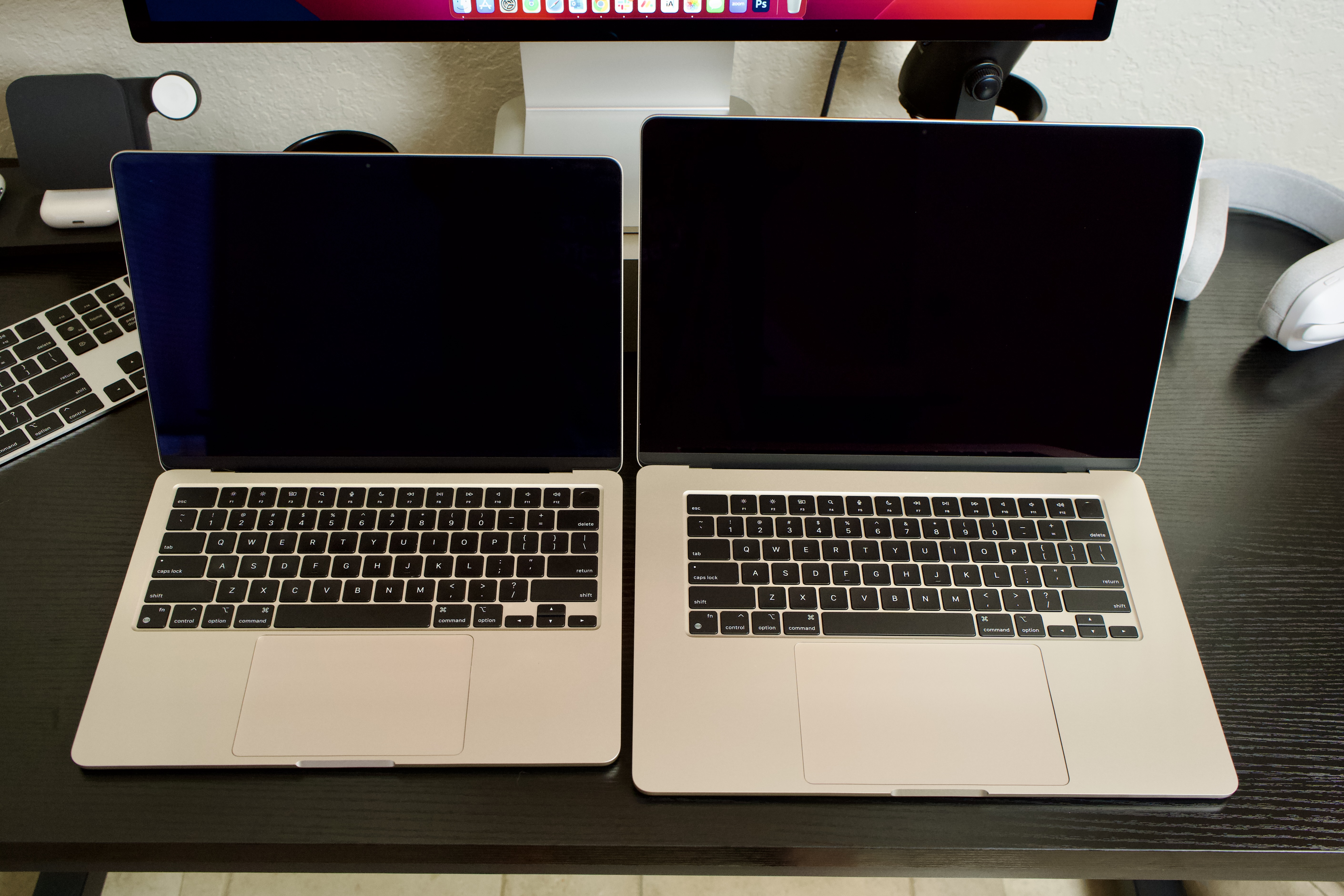
Unleashing the Power of Thunderbolt – A Comprehensive Guide to Connectivity
Thunderbolt technology has revolutionized how we connect devices, allowing for lightning-fast data transfer rates and versatility in connectivity options. This innovation enhances our experience across various platforms, especially with Monitors, Mac, and much more. In this article, we will explore the vast potential of Thunderbolt, how it integrates with modern technology, and offer insights on How to utilize its features effectively.
Thunderbolt

Thunderbolt is a hardware interface that allows the connection of external peripherals to a computer. Initially developed by Intel in collaboration with Apple, it combines data, video, audio, and power into a single connection. This remarkable technology offers a plethora of advantages over previous interfaces, enabling faster data transfer speeds and greater flexibility in connecting multiple devices.
The evolution of Thunderbolt has seen multiple iterations, each improving upon its predecessor. The original Thunderbolt interface had a maximum data transfer rate of 10 Gbps, while subsequent versions increased that capability significantly. Thunderbolt 3 and Thunderbolt 4 can achieve speeds of up to 40 Gbps, making them ideal for demanding applications like high-resolution video editing and large file transfers.
Understanding the underlying protocol of Thunderbolt is crucial for leveraging its full potential. It operates using PCI Express (PCIe) and DisplayPort technologies, enabling it to support a wide range of devices, including external graphics cards, storage solutions, and high-resolution monitors. This seamless integration simplifies the user experience, as multiple devices can be daisy-chained together through a single port, reducing cable clutter while enhancing functionality.
The History of Thunderbolt
To appreciate the impact of Thunderbolt, it’s essential to delve into its history. The journey began in 2011 when Apple introduced the first MacBook Pro equipped with Thunderbolt ports. This innovative move set a new standard for connectivity and opened up a world of possibilities for users.
Over the years, Thunderbolt has evolved in response to technological advancements and user demands. Each iteration brought enhancements in speed, capabilities, and compatibility. As computers and peripherals became more advanced, so too did the need for a robust connection that could accommodate these developments.
The introduction of Thunderbolt 3 marked a significant turning point. With its USB-C connector, it became compatible not only with traditional Thunderbolt devices but also with USB devices, providing unprecedented versatility. This shift allowed users to leverage existing infrastructure while enjoying the benefits of next-gen technology.
The Technical Aspects of Thunderbolt
Understanding the technical aspects of Thunderbolt can help users maximize their experience. The architecture combines several key elements:
- Data Protocols: Thunderbolt leverages PCIe, which enables high-speed data transfers. This capability is particularly beneficial for tasks that require large amounts of data movement, such as video editing or running virtual machines.
- Display Capabilities: Thunderbolt supports DisplayPort, allowing users to connect to multiple monitors with high resolutions. This feature is invaluable for professionals who rely on multitasking and expansive visual real estate.
- Power Delivery: One of the standout features of Thunderbolt is its ability to deliver power to connected devices. This means that users can charge laptops, smartphones, and other peripherals using a single cable, further streamlining their setup.
As technology continues to advance, the technical foundation of Thunderbolt is likely to evolve as well. Future versions may incorporate even more capabilities, solidifying its position as an indispensable tool for tech enthusiasts and professionals alike.
The Advantages of Using Thunderbolt
The advantages of utilizing Thunderbolt technology are manifold. From speed and efficiency to versatility and ease of use, it caters to a range of user needs. Here are some highlights:
- Speed: With transfer rates reaching up to 40 Gbps, Thunderbolt outpaces most traditional connections. This speed ensures quick access to large files and smooth operation of high-bandwidth applications.
- Versatility: The compatibility of Thunderbolt with a variety of devices and protocols allows users to connect everything from external drives to monitors seamlessly. This versatility makes it a preferred choice for professionals across various fields.
- Daisy Chaining: The ability to daisy chain multiple devices using a single Thunderbolt port is a game changer. Users can reduce cable clutter while expanding their setup to include multiple monitors and peripherals.
In conclusion, understanding Thunderbolt is essential for anyone looking to optimize their connectivity options. Its rich history, technical intricacies, and myriad advantages make it a fascinating topic worth exploring.
Monitors

One of the most impactful applications of Thunderbolt technology is in the realm of monitors. The integration of Thunderbolt with display technology has redefined how we interact with visual content. High-resolution displays, multi-monitor setups, and enhanced color accuracy are just a few benefits that Thunderbolt brings to the table.
Choosing the right monitor that utilizes Thunderbolt technology can significantly enhance your productivity and overall computing experience. Whether you’re a graphic designer, gamer, or office worker, understanding the various options available can help you make informed decisions.
Types of Monitors Compatible with Thunderbolt
When exploring the world of Thunderbolt monitors, it’s essential to understand the different types available on the market. These monitors cater to various needs and preferences, ensuring there’s something for everyone.
- Professional Monitors: For graphic designers and videographers, professional-grade monitors with Thunderbolt connectivity provide unparalleled color accuracy and resolution. These monitors often boast features like HDR support and wide color gamuts, ensuring that creatives can work with precision.
- Gaming Monitors: Gamers benefit from high refresh rates and low latency offered by Thunderbolt monitors designed specifically for gaming. These monitors can deliver stunning graphics and smooth gameplay, creating an immersive gaming experience.
- Multi-Purpose Monitors: Many users seek versatile monitors that can handle various tasks. Multi-purpose Thunderbolt monitors typically balance performance, aesthetic appeal, and connectivity options, making them suitable for both work and play.
By understanding the types of monitors available, users can better align their choices with their specific requirements.
Benefits of Thunderbolt Monitors
Connecting monitors via Thunderbolt technology comes with unique benefits that enhance user experience. These advantages extend beyond mere connectivity, impacting productivity and ease of use.
- High Resolution and Refresh Rates: Thunderbolt monitors often support higher resolutions and refresh rates compared to standard monitors. This quality is particularly important for tasks such as video editing, where precision and detail matter greatly.
- Quick Data Transfer: With Thunderbolt, transferring data between your computer and your monitor becomes practically instantaneous. This speed is critical for professionals who routinely work with large files or require immediate feedback during presentations.
- Reduced Cable Clutter: By connecting multiple monitors through a single Thunderbolt port, users can minimize cable clutter on their desks. This streamlined approach not only improves aesthetics but also enhances organization and accessibility.
In summary, Thunderbolt monitors open up a world of possibilities for users seeking high-performance displays. Their numerous benefits make them an attractive option for professionals and casual users alike.
Choosing the Right Thunderbolt Monitor
Selecting the perfect Thunderbolt monitor requires careful consideration of several factors. Understanding your needs and preferences is vital to making an informed decision.
- Resolution and Size: Consider the resolution that best suits your work. Higher resolutions, such as 4K, provide greater detail and clarity. Additionally, monitor size plays a role in usability; larger screens can enhance productivity by offering more screen real estate.
- Color Accuracy: For professionals in creative fields, color accuracy is a must. Look for monitors that offer good coverage of color spaces, such as Adobe RGB or DCI-P3, to ensure that your work is consistent across platforms.
- Ergonomics and Adjustability: Ensure that the monitor you choose has ergonomic features, such as height adjustment, tilt, and swivel capabilities. This flexibility allows you to create a comfortable workspace, reducing strain during long hours of use.
Ultimately, choosing the right Thunderbolt monitor involves balancing personal preferences with professional needs. Taking the time to evaluate options will lead to a satisfying purchase that enhances your workflow.
Mac
The synergy between Thunderbolt technology and Mac computers illustrates the innovation’s transformative impact on the Apple ecosystem. Mac users have been at the forefront of utilizing Thunderbolt, experiencing its advantages through a range of applications and devices.
From connecting external displays to high-speed storage solutions, Thunderbolt integration in Mac systems has become a hallmark of Apple’s commitment to providing powerful tools for creativity and productivity. This section delves into how Macs leverage Thunderbolt technology and what it means for users.
The Role of Thunderbolt in Macs
For Mac users, Thunderbolt serves as an essential component of connectivity and device integration. It empowers users to connect a wide array of peripherals while ensuring optimal performance and minimal latency.
- External Graphics Support: One of the standout features of Thunderbolt on Macs is its ability to support external graphics processing units (eGPUs). This capability enables users to enhance their graphics performance significantly, making it possible to run resource-intensive applications like gaming or video editing smoothly.
- Multiple Device Connections: With Thunderbolt, Mac users can connect multiple devices through a single port. This capability simplifies workflows, allowing users to daisy-chain monitors and peripherals without sacrificing performance.
- Power Delivery: Macs equipped with Thunderbolt ports can also benefit from power delivery features. This function allows users to charge their MacBooks while simultaneously using other devices, ensuring a tidy and efficient workspace.
This combination of features makes Thunderbolt an indispensable tool for Mac users, enhancing their overall experience while providing the flexibility needed to tackle a variety of tasks.
Popular Mac Models Featuring Thunderbolt
Apple has incorporated Thunderbolt technology into several Mac models, ensuring users can enjoy its benefits across different computing experiences. Each model offers unique features tailored to various needs.
- MacBook Pro: The MacBook Pro lineup showcases the capabilities of Thunderbolt with its high-speed connectivity and robust performance. Ideal for professionals, these laptops often serve as powerhouses for creative work, thanks to their strong processing capabilities and graphics support.
- iMac: The iMac takes advantage of Thunderbolt to provide seamless connectivity to external devices. Whether used for design work, video production, or casual browsing, the iMac benefits from fast data transfer rates and versatile connectivity options.
- Mac mini: The Mac Mini is a compact powerhouse that boasts Thunderbolt ports for extensive peripheral support. Its small form factor makes it a popular choice for users looking to save space without compromising performance.
With Thunderbolt integrated into these popular Mac models, users can confidently select devices that align with their requirements and workflows.
Enhancing Productivity with Thunderbolt on Mac
Using Thunderbolt technology on your Mac can lead to significant productivity gains. By capitalizing on its strengths, users can create an efficient environment conducive to focus and results.
- Streamlined Workflows: The ability to connect multiple devices without needing numerous cables simplifies the user experience. For instance, users can easily switch between their main task and secondary devices, such as a monitor or external drive, leading to a more fluid workflow.
- Faster File Transfers: The high-speed data transfer capabilities of Thunderbolt allow users to manage large projects more efficiently. Whether backing up files or moving assets for creative work, the speed with which data moves can save valuable time.
- Enhanced Collaboration: For teams working together, Thunderbolt can facilitate collaboration by enabling users to share their screens or presentations quickly. This immediacy fosters communication and teamwork, helping groups make decisions swiftly.
In essence, utilizing Thunderbolt on a Mac transforms how users interact with technology, allowing them to work smarter and more efficiently.
How to
Understanding how to make the most of Thunderbolt technology is critical for maximizing its potential. From setting up your devices to troubleshooting common issues, this section provides practical tips and guidelines for users looking to enhance their experience.
Setting Up Your Thunderbolt Devices
Getting started with Thunderbolt requires a few essential steps to ensure everything functions smoothly. Follow these guidelines to set up your devices effectively.
- Check Compatibility: Before making any connections, verify that your devices are compatible with Thunderbolt technology. Look for Thunderbolt logos and specifications on both your computer and peripherals to ensure they will work seamlessly together.
- Use Quality Cables: The quality of your Thunderbolt cables is crucial for achieving optimal performance. Always use certified Thunderbolt cables to ensure reliable connectivity and data transfer speeds.
- Connect and Configure: After plugging in your devices, many operating systems will automatically recognize them. However, you may need to configure settings such as display arrangement and audio output manually. Familiarize yourself with the settings menu to customize your setup according to your preferences.
Setting up your Thunderbolt devices correctly will pave the way for a smooth and productive experience.
Troubleshooting Common Thunderbolt Issues
Despite its reliability, users may encounter occasional issues with Thunderbolt connections. Being aware of common problems and knowing how to resolve them can save time and frustration.
- Device Not Recognized: If a connected device isn’t recognized, start by checking the physical connections. Ensure both ends of the cable are securely attached and inspect for any visible damage. Restarting your computer and the device can also help refresh the connection.
- Slow Data Transfer Rates: If you notice slower-than-expected data transfer speeds, check whether you’re using the appropriate cables and ports. Using a Thunderbolt 2 cable with a Thunderbolt 3 device may result in reduced speeds, so always use the correct connection type.
- Display Issues: When connecting multiple monitors, you may experience display problems such as flickering or incorrect resolutions. Check the display settings on your computer and adjust them to match the capabilities of your monitors. Updating drivers and firmware may also resolve compatibility issues.
By familiarizing yourself with potential issues and remedies, you can maintain a seamless experience with Thunderbolt technology.
Maximizing Thunderbolt Performance
To truly harness the power of Thunderbolt, consider the following strategies to enhance performance and improve your overall experience.
- Utilize Multiple Ports: If your computer has multiple Thunderbolt ports, take advantage of them by connecting additional devices. This approach creates a more versatile setup and allows for various configurations tailored to your needs.
- Keep Software Updated: Regularly updating your operating system and device drivers can optimize performance and address compatibility issues. Staying current with updates ensures that you’re benefiting from the latest improvements and fixes.
- Experiment with Daisy Chaining: Explore the capabilities of daisy chaining by connecting multiple devices through a single port. This technique reduces clutter while enabling you to expand your setup without sacrificing speed or performance.
In conclusion, understanding how to effectively use Thunderbolt technology will empower you to enhance your computing experience. By following the right steps and maintaining your equipment, you can ensure a smooth, productive workflow.
Conclusion
The advent of Thunderbolt technology marks a significant milestone in the landscape of connectivity. With its rapid data transfer speeds, versatile compatibility, and power delivery capabilities, it has become a staple for users across various domains, including creative professionals, gamers, and everyday users.
From integrating multiple monitors to optimizing productivity on Mac systems, Thunderbolt has transformed how we interact with technology. Understanding its features, advantages, and effective usage will empower users to unlock its full potential.
As we continue to embrace advancements in technology, Thunderbolt stands as a testament to innovation and progress. By staying informed and adapting to changes in connectivity, users can ensure they remain at the cutting edge of their respective fields, equipped with the tools necessary to succeed in an increasingly digital world.





Comments (0)